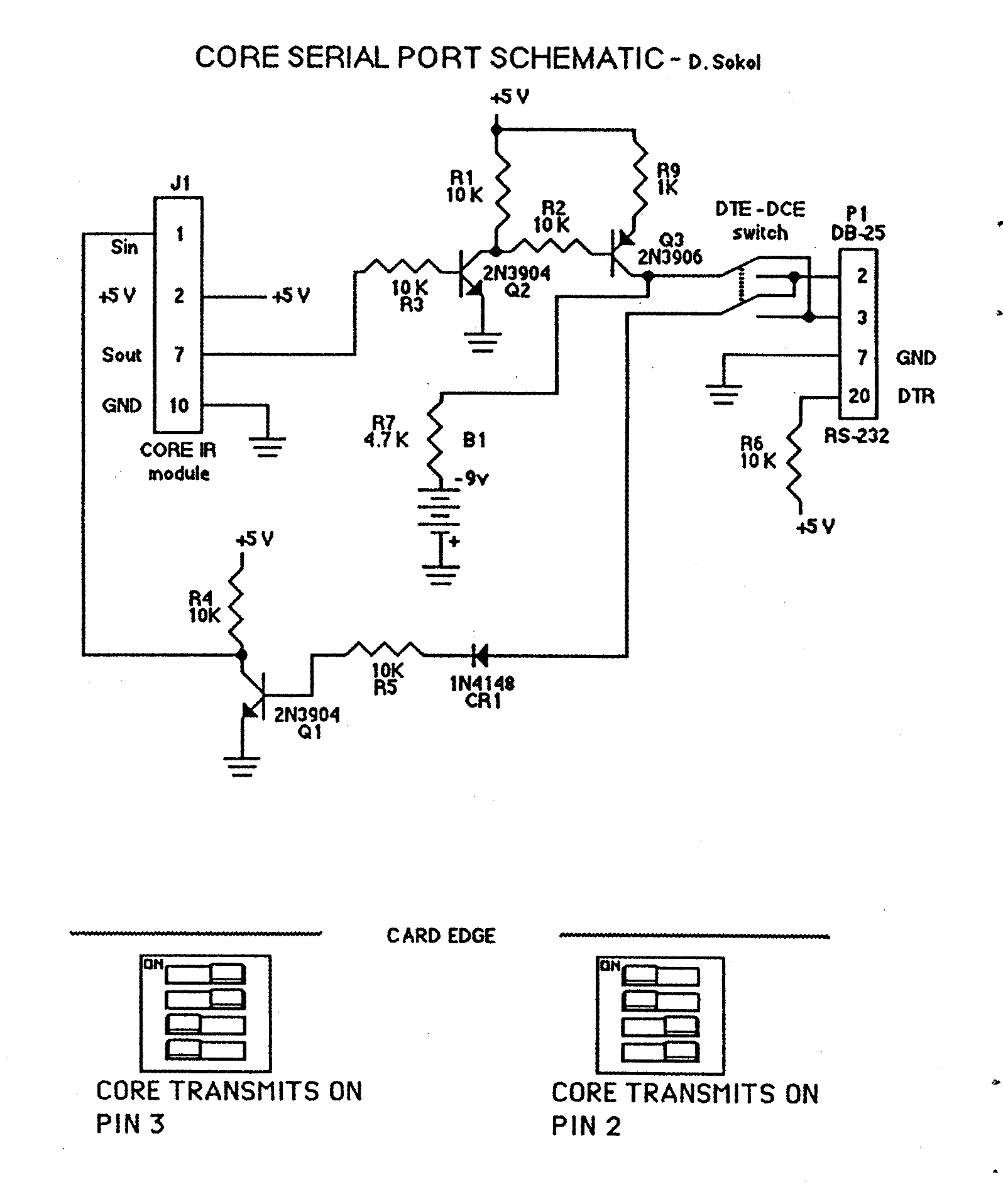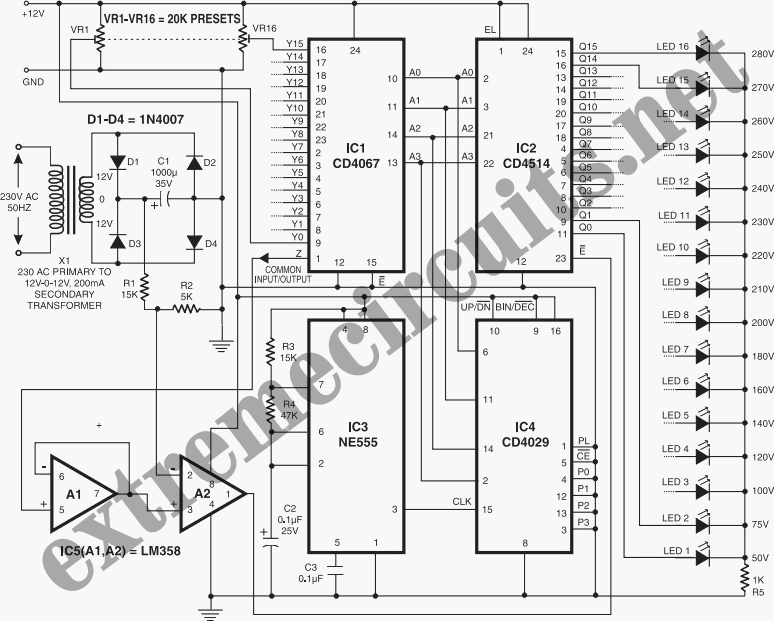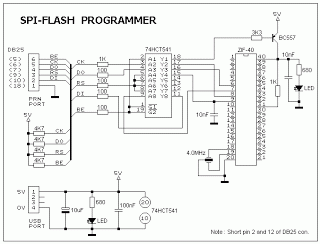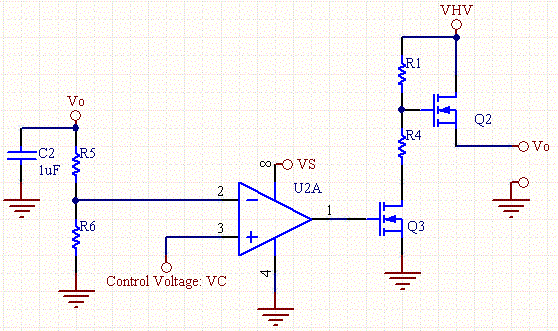
HIP6302 Microprocessor CORE Voltage Regulator Multiphase Buck PWM Controller
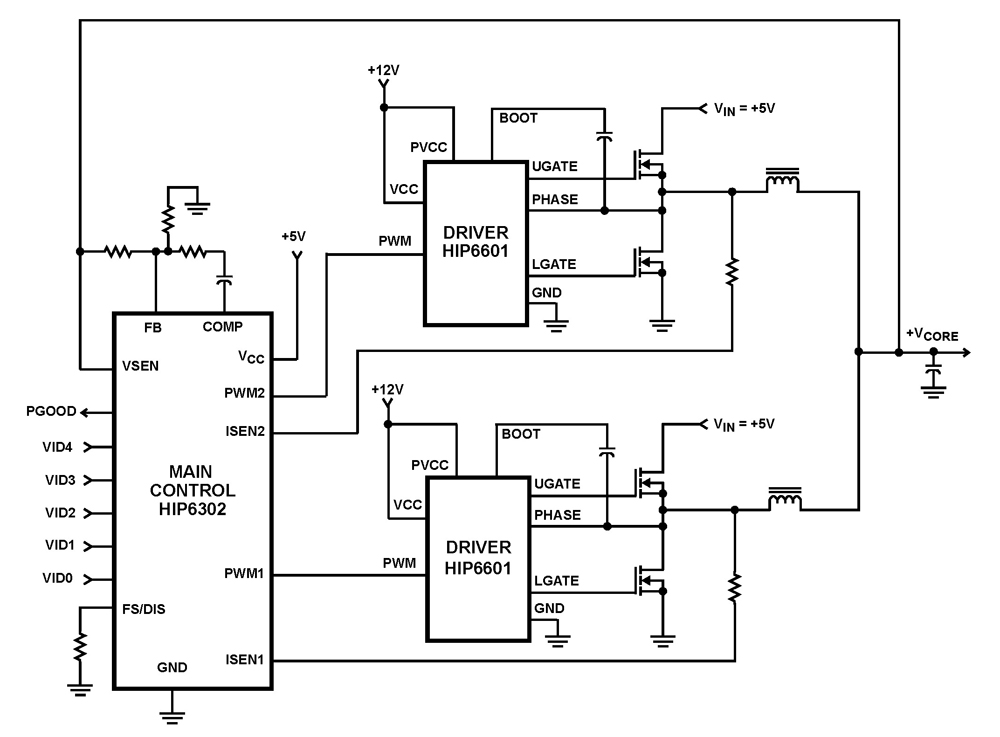
The HIP6302 Multiphase PWM control IC, along with its companion gate drivers (HIP6601, HIP6602, or HIP6603) and Intersil MOSFETs, delivers a precise voltage regulation system for advanced microprocessors. Multiphase power conversion represents a significant advancement over traditional single-phase converter configurations, which were previously utilized to meet the growing current demands of modern microprocessors. By distributing power and load current, multiphase converters enable the use of smaller, lower-cost transistors and require fewer input and output capacitors. These reductions are a result of the higher effective conversion frequency and increased ripple current due to the phase interleaving process inherent in this topology. For instance, a two-phase converter operating at 350 kHz will produce a ripple frequency of 700 kHz. Furthermore, the enhanced bandwidth of this design allows for quicker responses to load transients. Notable features of this controller IC include programmable VID codes from the microprocessor, ranging from 1.100V to 1.850V, with a system accuracy of ±1%. The pull-up currents on these VID pins eliminate the necessity for external pull-up resistors. Additionally, "droop" compensation, which mitigates overshoot or undershoot of the CORE voltage, can be easily programmed with a single resistor. Another significant feature is the PGOOD monitor circuit, which remains low until the CORE voltage rises within 10% of the programmed voltage during its Soft-Start sequence. An over-voltage condition, defined as 15% above the programmed CORE voltage, triggers the converter to shut down and activates the lower MOSFETs to clamp and protect the microprocessor. An under-voltage condition is also monitored, resulting in a low PGOOD signal if the CORE voltage drops 10% below the programmed level. Over-current protection limits the regulator current to less than 25% of the programmed trip value. These features collectively provide robust monitoring and protection for the microprocessor and power system.
The HIP6302 Multiphase PWM control IC is designed to enhance the efficiency and reliability of voltage regulation in high-performance microprocessor applications. The integration of this IC with the HIP660x family of gate drivers and Intersil MOSFETs creates a comprehensive power management solution that is particularly suited for multiphase converter architectures. The architecture's ability to distribute load current across multiple phases not only decreases the thermal stress on individual components but also allows for the use of lower-rated, cost-effective transistors.
The programmable VID (Voltage Identification) feature is crucial for modern microprocessors, which often require dynamic voltage scaling to optimize power consumption and performance. The accuracy of ±1% ensures that the microprocessor operates within its specified voltage range, thereby enhancing reliability and efficiency. The omission of external pull-up resistors simplifies circuit design and reduces component count, which is beneficial in high-density applications.
The droop compensation mechanism is an essential aspect of the design, allowing for fine-tuning of the output voltage under varying load conditions. This feature is particularly important in applications where load transients can cause significant voltage deviations, potentially leading to system instability.
The PGOOD (Power Good) monitor circuit is an integral part of the safety features of the HIP6302. By signaling when the output voltage is within an acceptable range, it provides a reliable indication of the power supply's status. The over-voltage and under-voltage protections ensure that the microprocessor is safeguarded against potentially damaging voltage levels, while the over-current protection feature prevents excessive current flow, further enhancing the reliability of the system.
Overall, the HIP6302, in conjunction with its associated components, provides a robust, efficient, and flexible solution for voltage regulation in advanced microprocessor applications, addressing the challenges posed by increasing power demands and the need for precise control.The HIP6302 Multiphase PWM control IC together with its companion gate drivers, the HIP6601, HIP6602 or HIP6603 and Intersil MOSFETs provides a precision voltage regulation system for advanced microprocessors. Multiphase power conversion is a marked departure from earlier single phase converter configurations previously employed to satisfy the eve
r increasing current demands of modern microprocessors. Multiphase convertors, by distributing the power and load current results in smaller and lower cost transistors with fewer input and output capacitors. These reductions accrue from the higher effective conversion frequency with higher frequency ripple current due to the phase interleaving process of this topology.
For example, a two phase convertor operating at 350kHz will have a ripple frequency of 700kHz. Moreover, greater convertor bandwidth of this design results in faster response to load transients. Outstanding features of this controller IC include programmable VID codes from the microprocessor that range from 1. 100V to 1. 850V with a system accuracy of ±1%. Pull up currents on these VID pins eliminates the need for external pull up resistors. In addition "droop" compensation, used to reduce the overshoot or undershoot of the CORE voltage, is easily programmed with a single resistor.
Another feature of this controller IC is the PGOOD monitor circuit which is held low until the CORE voltage increases, during its Soft-Start sequence, to within 10% of the programmed voltage. Over-voltage, 15% above programmed CORE voltage, results in the converter shutting down and turning the lower MOSFETs ON to clamp and protect the microprocessor.
Under voltage is also detected and results in PGOOD low if the CORE voltage falls 10% below the programmed level. Over-current protection reduces the regulator current to less than 25% of the programmed trip value. These features provide monitoring and protection for the microprocessor and power system. 🔗 External reference
The HIP6302 Multiphase PWM control IC is designed to enhance the efficiency and reliability of voltage regulation in high-performance microprocessor applications. The integration of this IC with the HIP660x family of gate drivers and Intersil MOSFETs creates a comprehensive power management solution that is particularly suited for multiphase converter architectures. The architecture's ability to distribute load current across multiple phases not only decreases the thermal stress on individual components but also allows for the use of lower-rated, cost-effective transistors.
The programmable VID (Voltage Identification) feature is crucial for modern microprocessors, which often require dynamic voltage scaling to optimize power consumption and performance. The accuracy of ±1% ensures that the microprocessor operates within its specified voltage range, thereby enhancing reliability and efficiency. The omission of external pull-up resistors simplifies circuit design and reduces component count, which is beneficial in high-density applications.
The droop compensation mechanism is an essential aspect of the design, allowing for fine-tuning of the output voltage under varying load conditions. This feature is particularly important in applications where load transients can cause significant voltage deviations, potentially leading to system instability.
The PGOOD (Power Good) monitor circuit is an integral part of the safety features of the HIP6302. By signaling when the output voltage is within an acceptable range, it provides a reliable indication of the power supply's status. The over-voltage and under-voltage protections ensure that the microprocessor is safeguarded against potentially damaging voltage levels, while the over-current protection feature prevents excessive current flow, further enhancing the reliability of the system.
Overall, the HIP6302, in conjunction with its associated components, provides a robust, efficient, and flexible solution for voltage regulation in advanced microprocessor applications, addressing the challenges posed by increasing power demands and the need for precise control.The HIP6302 Multiphase PWM control IC together with its companion gate drivers, the HIP6601, HIP6602 or HIP6603 and Intersil MOSFETs provides a precision voltage regulation system for advanced microprocessors. Multiphase power conversion is a marked departure from earlier single phase converter configurations previously employed to satisfy the eve
r increasing current demands of modern microprocessors. Multiphase convertors, by distributing the power and load current results in smaller and lower cost transistors with fewer input and output capacitors. These reductions accrue from the higher effective conversion frequency with higher frequency ripple current due to the phase interleaving process of this topology.
For example, a two phase convertor operating at 350kHz will have a ripple frequency of 700kHz. Moreover, greater convertor bandwidth of this design results in faster response to load transients. Outstanding features of this controller IC include programmable VID codes from the microprocessor that range from 1. 100V to 1. 850V with a system accuracy of ±1%. Pull up currents on these VID pins eliminates the need for external pull up resistors. In addition "droop" compensation, used to reduce the overshoot or undershoot of the CORE voltage, is easily programmed with a single resistor.
Another feature of this controller IC is the PGOOD monitor circuit which is held low until the CORE voltage increases, during its Soft-Start sequence, to within 10% of the programmed voltage. Over-voltage, 15% above programmed CORE voltage, results in the converter shutting down and turning the lower MOSFETs ON to clamp and protect the microprocessor.
Under voltage is also detected and results in PGOOD low if the CORE voltage falls 10% below the programmed level. Over-current protection reduces the regulator current to less than 25% of the programmed trip value. These features provide monitoring and protection for the microprocessor and power system. 🔗 External reference
